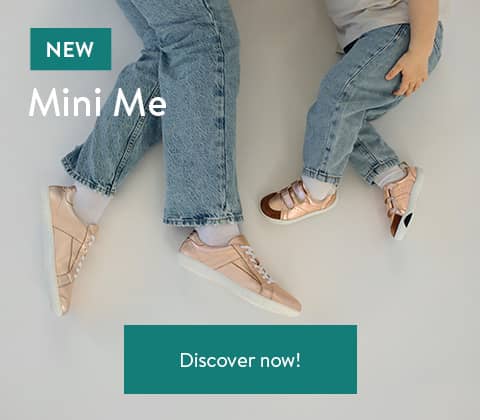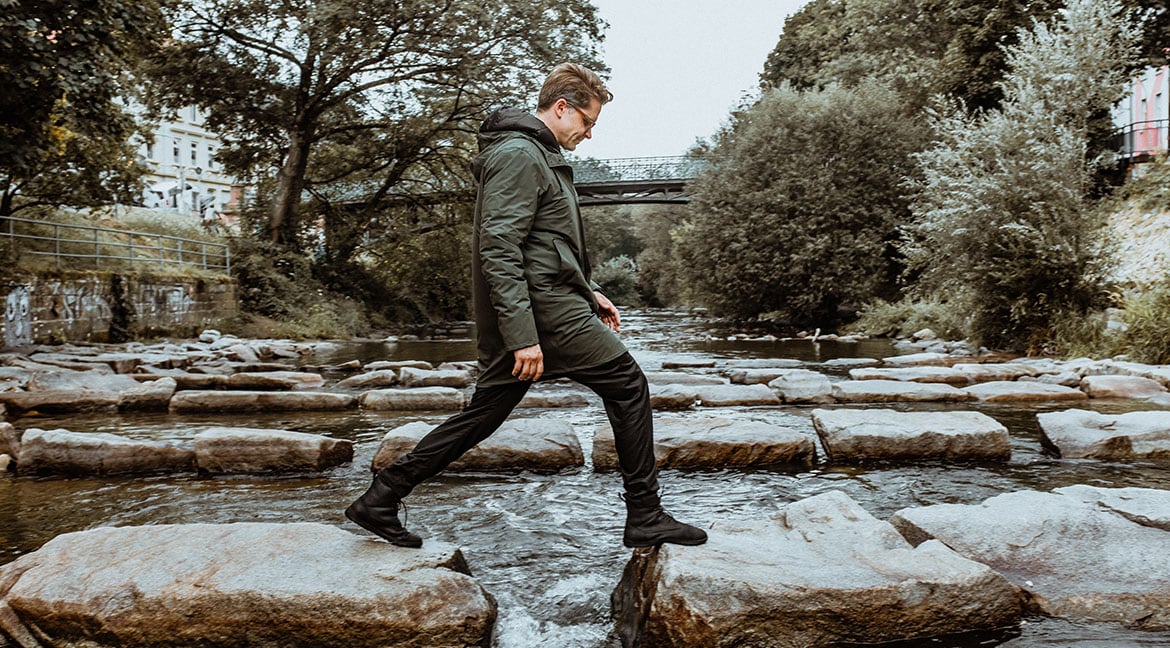For (Bare)foot-walker: Shoes with which you can walk barefoot?
You've probably already noticed it: The new shoe trend is called barefoot walking - walking without shoes has arrived in the middle of society. Barefoot runners enjoy direct contact with the ground not only in open-air swimming pools or on sandy beaches; attentive passers-by now also encounter barefoot walkers in parks and city centres. Sounds interesting? Here's what you need to know about barefoot walking
Walking barefoot: It's not always possible to go completely without shoes
However, walking (all day) with bare feet is not suitable for everyone. The reasons for this vary greatly. Examples are:
- The risk of injury when walking barefoot: Anyone who has ever walked barefoot over difficult surfaces such as rolled chippings quickly develops a healthy caution.
- Cold feet: In summer, the temperatures invite you to run barefoot. For many, however, the situation is quite different during the rest of the year, when it is simply too cold for bare feet..
- "Dress code": In the office, in the supermarket, when going to the authorities - in some places it is a bit difficult or simply not allowed to walk barefoot.
- The transition to barefoot walking: If you are at the beginning of your barefoot career, you risk injuries if you do not start slowly.
As you can see, walking completely barefoot is not necessarily always pleasant. Interested people should first learn how to walk barefoot before they decide to walk barefoot all the time. One solution for this and for the other reasons listed above, which resourceful minds and barefoot fans have been working on in recent years, are so-called barefoot shoes.
Are there shoes that you can walk in like barefoot?
In a nutshell: Yes, they exist! The simple yet ingenious idea behind barefoot shoes is this: For body and mind, walking feels like walking barefoot, while the foot is still in a shoe. In this way, the feet are protected and clothed for everyday use.
Back to the roots: The soles of barefoot shoes
The secret lies first and foremost in the sole: it is kept thin and flexible in barefoot or minimal shoes and thus provides a feeling like walking barefoot. This has clear advantages over conventional shoes.
Due to the thinness of the sole, there is less distance between the foot and the walking surface - the sole of the foot is almost as close to the ground as when walking barefoot and experiences the corresponding sensory stimuli.
Due to the higher Flexibility you can move more naturally and freely in barefoot shoes. This strengthens your feet and provides better posture - which results in more efficiency when walking.
Freedom for the toes: More toe room with barefoot shoes
You know that pinched feeling, when wearing "normal" shoes? This is often because the toes do not have enough space, because the shoe is simply too narrow towards the front. Many barefoot shoes therefore have a wider toe box. This wider toe box allows you to step more naturally, which automatically leads to better cushioning. In addition, the big toe can perform its function as a stabilizer much better. No compromises in terms of appearance: If you value that your barefoot shoes look as similar as possible to your previous everyday shoes, rest assured. Meanwhile, there are barefoot shoes with a narrower toe box that give you the feel of barefoot walking in your usual-classic shoe look. At Groundies, for example, we carry both barefoot shoes with a wide toe box and those with a narrower toe box.
Everything to Zero: The Zero Blast in Barefoot Shoes
The earth is a sphere (well, exactly an ellipsoid) and the soles of barefoot shoes are continuously flat.In technical terms, this is called zero-drop or zero-sprint. This allows the most natural barefoot position that can be created with shoes. Thus, barefoot shoes prevent postural deformities and provide a more natural walking than "conventional" shoes.
Free and easy: the material of barefoot shoes
At best, barefoot shoes are comfortable and not heavy. The decisive factor here is the material used for the barefoot shoe: it should be soft, light and flexible. This allows the foot and shoe to adapt to each other individually and ensure the highest possible freedom when walking barefoot.
In combination to the healthy barefoot walking experience
All these individual components lead to a successful imitation of barefoot walking, only combined with the advantages that a shoe brings with it. In barefoot shoes, your feet have the opportunity to function in their original functions, namely touching and stabilizing. This way you get back to a natural movement. The fact that your muscles are strengthened and your posture improved is more than just a pleasant side effect.
Walking like barefoot in barefoot shoes - important questions clarified
Now you know how barefoot shoes are constructed and can give you the feeling of walking (almost) without shoes. Below you will find answers to questions about barefoot walking that we at Groundies encounter again and again..
Which barefoot shoes are the best?
Of course, there is no general answer to this question. It clearly depends on the intended use. First of all: Are you looking for barefoot shoes for women or for men? After this (probably rather easy) decision, the question of the intended use arises: Are you looking for example
- Barefoot shoes for everyday wear like ballerinas for women or sneakers for men?
- Barefoot shoes for sports or outdoor activities?
- Barefoot shoes for spring and summer or autumn and winter?
For whom are barefoot shoes not suitable?
If problems already occur when walking without shoes - i.e. completely barefoot - you should seek medical advice, for example from an orthopedist. If there are already deformities of the feet, walking barefoot - and thus also walking in barefoot shoes - can, in the worst case, exacerbate the problem. Therefore: It is best to wear barefoot shoes only on healthy feet and, in the event of health problems, always seek medical advice from an expert first!
Barefoot walking in the Winter in barefoot shoes: Is it healthy?
Hardcore barefoot walkers also walk around outdoors in winter without footwear. For everyone else - probably the majority - there are now also special barefoot shoes for the winter. However, the season does not change the basic health aspect. If you want, you can also walk through autumn and winter in conventional barefoot shoes: A pair of warm Socks or insoles can remedy the situation, provided that the barefoot shoes allow it.
To start: What to consider when walking with barefoot shoes?
Want to get started yourself and experience the feeling of walking barefoot in shoes? For the beginning, the following tips have proven to be very helpful.
Slowly but surely switching to barefoot shoe
As mentioned in the beginning, the feet should slowly get used to barefoot walking. The same applies to running in barefoot shoes. Particular attention should be paid to sporting activities: Muscles, joints and tendons are not used to the new type of stress and must slowly become familiar with the new way of locomotion..
The ground makes the difference
Pay attention to where you walk! This applies especially to barefoot shoes for sports in the beginning. Soft surfaces such as meadows or sand that is not too loose are recommended for the beginning. There, your feet can get used to the new way of running without too much stress.
Tip: Maybe in between for comparison and for a further sensitivity experience run completely without shoes over beach and meadowy
A well-groomed foot feels especially comfortable in a barefoot shoe
With trimmed toenails and regularly groomed feet, experience has shown that barefoot shoes are simply more fun. In addition, you can prevent injuries at best.
Listen to your feet and your whole body!
If walking or walking in barefoot shoes feels uncomfortable for a long period of time, you should take a break and seek professional medical advice..
You can only evaluate walking in barefoot shoes if you try it
Now you have received a lot of input on the subject of walking in barefoot shoes. But whether barefoot shoes are really something for you, you can usually only experience on your own foot. To be in a shoe and still be able to perceive the ground in its different facets and to walk through the world with an incredible flexibility on your foot is a completely new experience for most people. Have fun!!
















